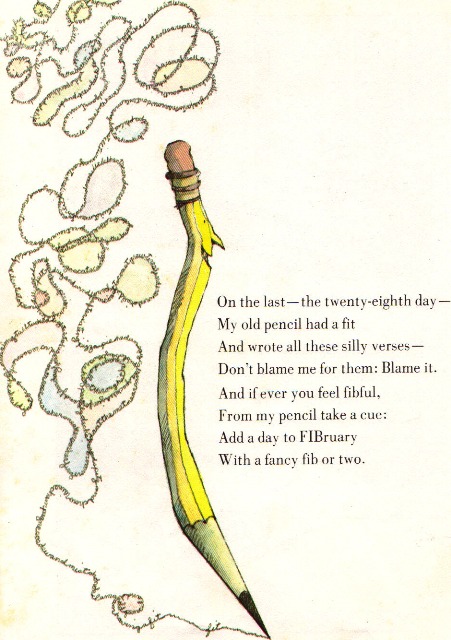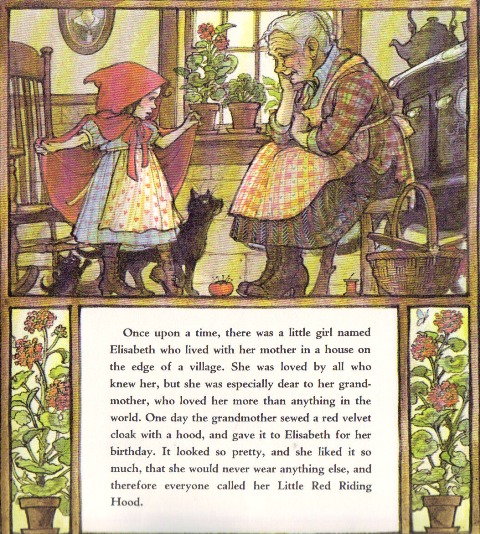Merry Merry FIBruary
written by Doris Orgel
illustrations by Arnold Lobel
As March blows the door closed on February, I thought it appropriate to show off my new favorite find. At a buck seventy-five, Merry Merry FIBruary is a book full of crazy. And it had Pippi and I in stitches all the way through to the skinny yellow pencil at the end.
Although Lobel illustrated FIBruary for its author, Doris Orgel, there is so much of Lobel in this book. The armchair which sprouts a rosebush (Mouse Soup) would have fit neatly within the pages of FIBruary, which makes me think that Orgel could have lived happily ever after inside Lobel's brain, watching his clever images in early infancy as a sort of moving picture show. Crazy talk, maybe. You be the judge.
Merry Merry FIBruary is that one magical month of the year when everything is turned on its ear, with each of the thirty days (FIBruary includes a bit of fibbing about the numbers) represented by a truly nutty scenario. The animals at the zoo are made to wear "shoes and socks and pants and dresses - You and me, though, we go bare." And Uncle Harry "found no reason why he should spend his whole life as a grown-up - and grew back down to babyhood."
The book even includes a mock calender for each of the four weeks.
Day First.
And one of our favorites, a day when "Giants shrink and midgets grow. Take Fee-Fi-Fo and Tiny Tom, though which is which I do not know."
And here's Billy Frink, who "grew petunias in his bathtub and took showers in his sink."
And Pippi's ultimate fantasy, the dentist turned patient, with the girl holding the drill.
And the hands down giggle winner. Gotta give you the verbatim words for this one.
And here it is. The skinny yellow pencil at the end. Nothing remarkable about its yellow pencil-ness. But without it, my previous reference makes no sense.
Have a merry merry last day of FIBruary!



















































